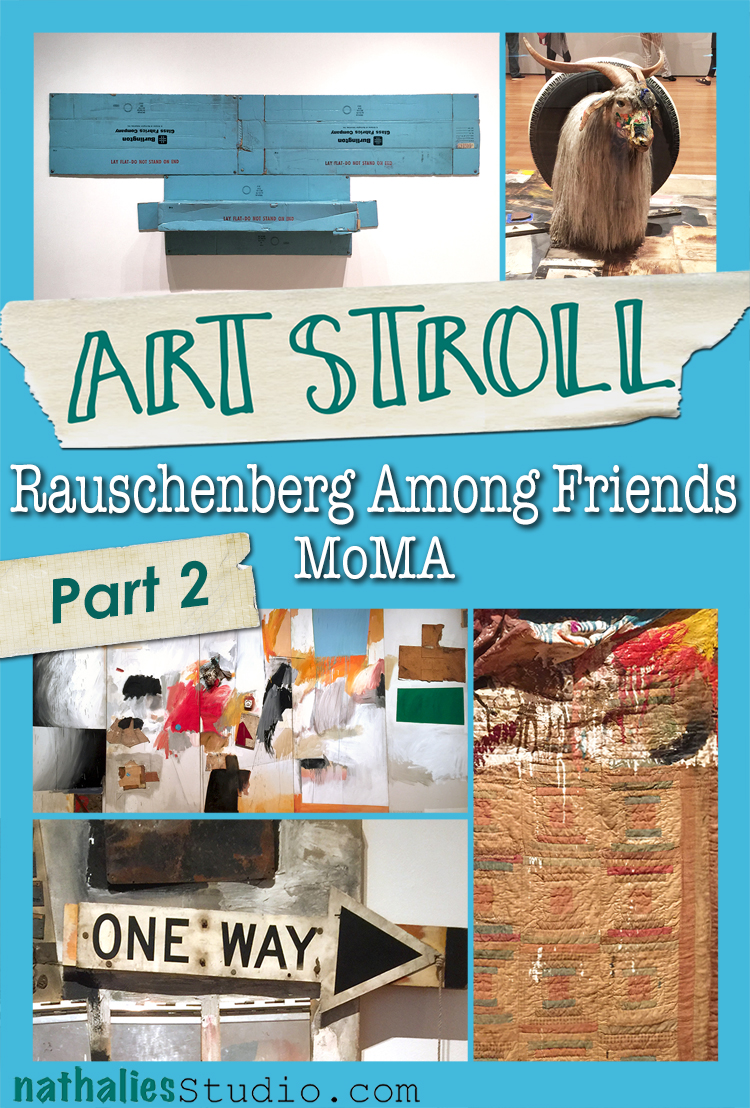
As promised Part 2 of my visit of the Rauschenberg Among Friends Exhibition – you can read about Part 1 here. When you are reading this I have been already back to the show and have scheduled another visit next week …I am obsessed- HELP – LOL
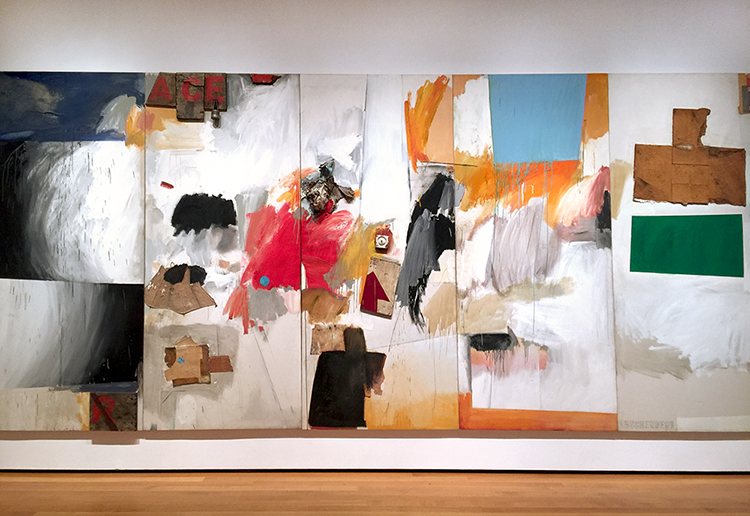
“Ace”(1962) , Oil, paper, cardboard, paint-can label, umbrella, doorknob, fabric, wood, nails, and metal on canvas – on five panels
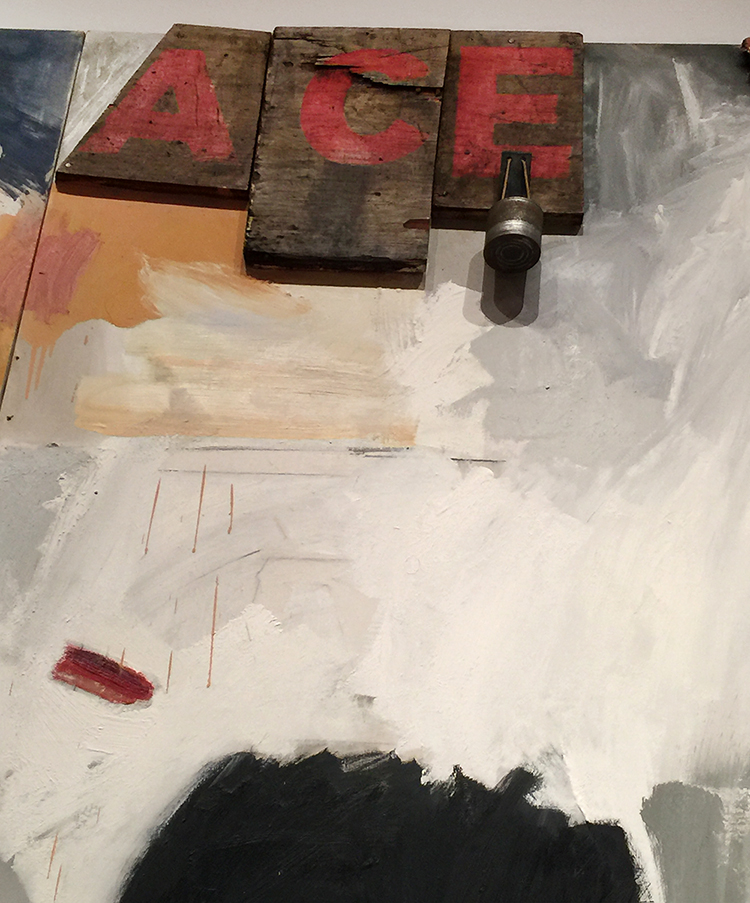
I love how reading the signage becomes the start of a scavenger hunt trying to find all elements mentioned on the panels.

“Black Market” (1961), Oil, watercolor, pencil, paper, fabric, newspaper, printed paper, printed reproductions, wood, metal, tin, street sign, license plate and four metal clipboards on canvas with rope, chain and wood suitcase containing rubber stamps, ink pad and typed instructions regarding objects to be given and taken by viewers
Black Market was first on view in Amsterdam in 1961 and viewers were invited to take out an object from the suitcase and replace it with their own and then make a drawing of their contribution on one of the clipboards. Unfortunately people were mostly just stealing the objects in the suitcase and so Rauschenberg withdrew his invitation. – I just love the concept and thought -so sad it didn’t work out!
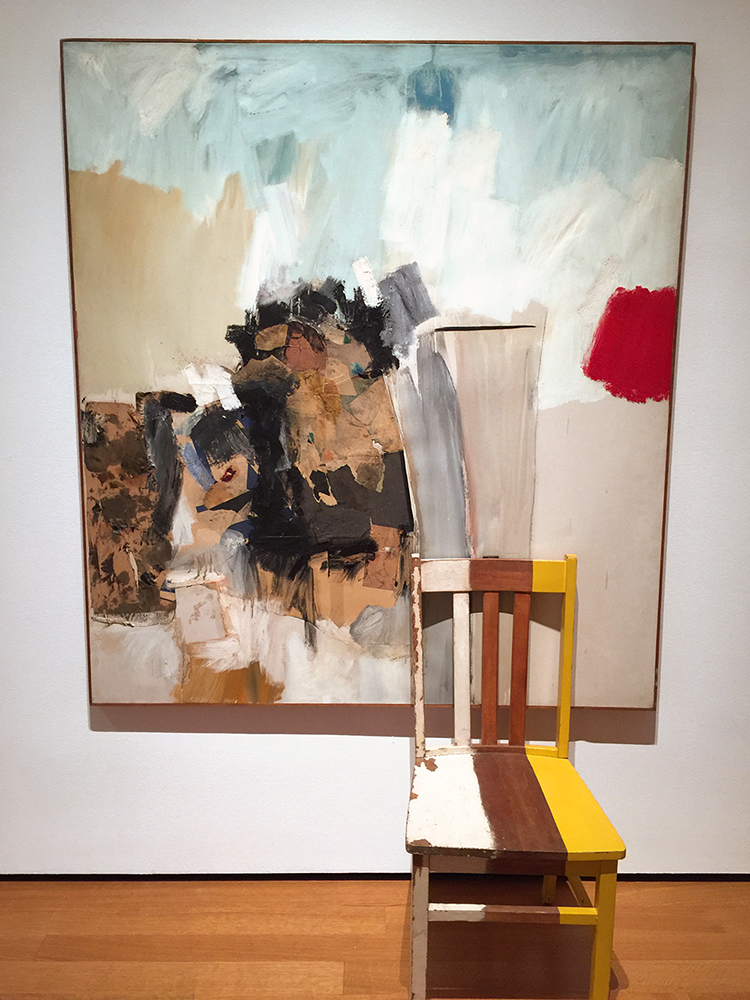
“Pilgrim” (1960), Oil, graphite, printed paper and fabric on canvas with painted wood chair.
If you look closely you can see that Rauschenberg actually used the chair as a painting tool to drag down the paint in the canvas and then attached the chair as an collage element. It looks as if you are invited to take a seat to be part of the painting- but Natalya and I refrained from doing so – LOL.
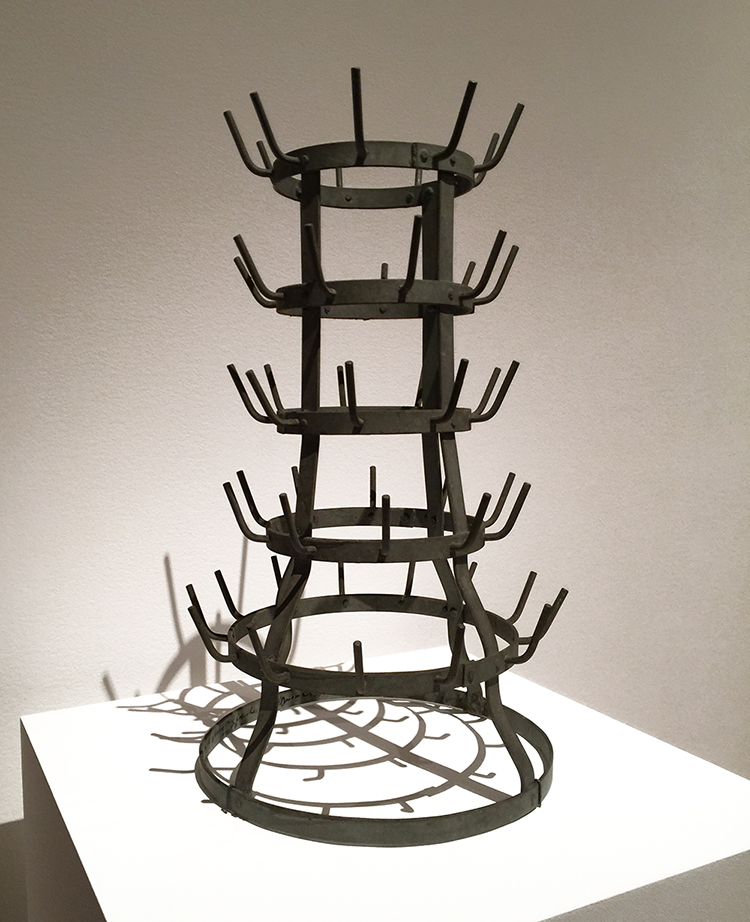
Marcel Duchamp “Bottle Rack” 1960
Rauschenberg purchased this work for three dollars after he saw it in an exhibition, and then asked Duchamp to sign the work. Duchamp agreed and signed and left an inscription saying “Impossible for me to recall the original phrase” . Jokesters- LOL- I wonder how much this readymade art piece is worth nowadays.
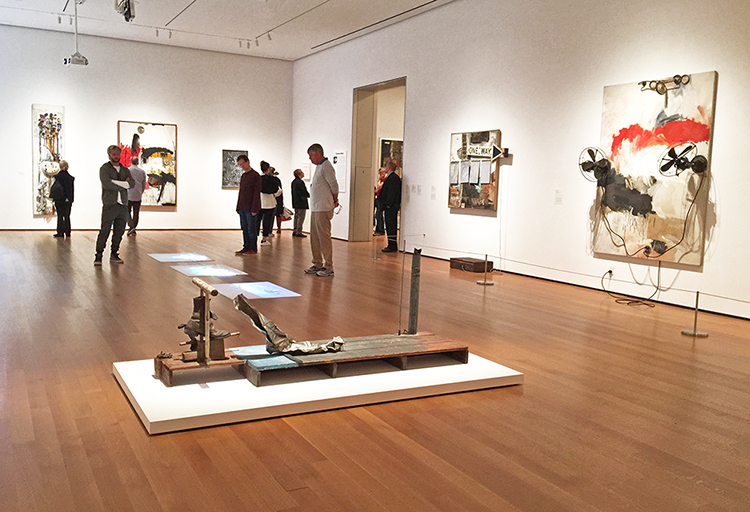
I loved how the exhibition was laid out – and of course early morning hours are the best to ensure a more empty space.

“scanning” (1963) Oil and silkscreen -ink print on canvas
the canvas includes a photo of the Merce Cunningham Dance Company with Steve Paxton how lived with Rauschenberg when the piece was made.
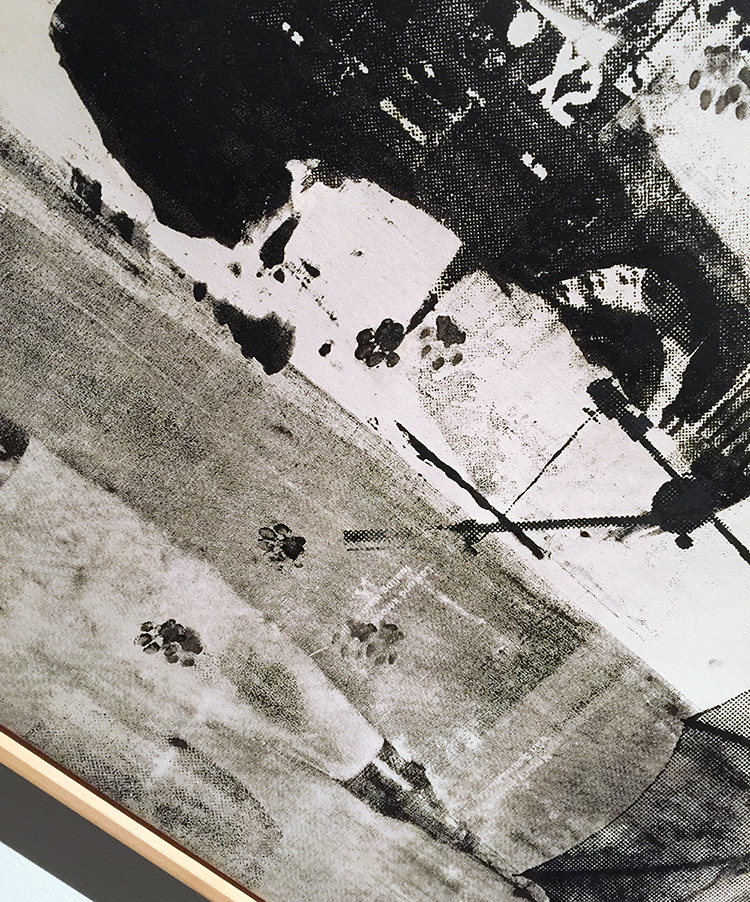
The paw prints here were added by Sweetie, Rauschenberg’s pet kinkajou who strolled across the canvas while Rauschenberg was making it on the floor of his studio. He simply embraced the accident as part of the work. HA YES!
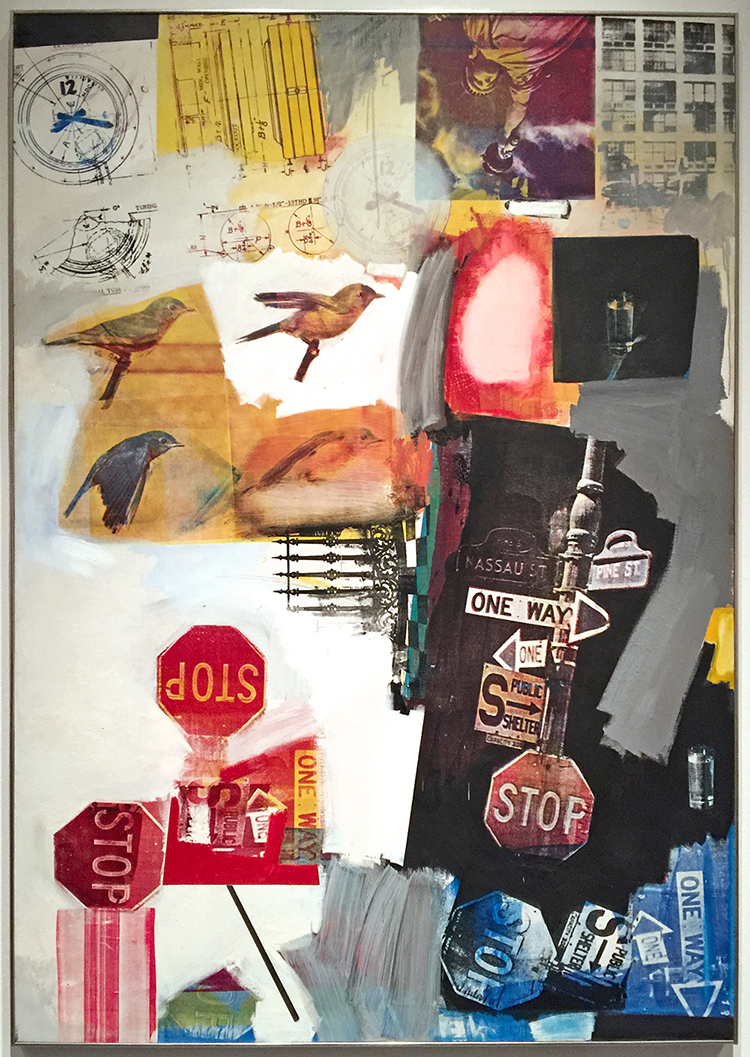
“Overdrive” (1963) Oil and silkscreen -ink print on canvas
I am so in love with this piece and the one below
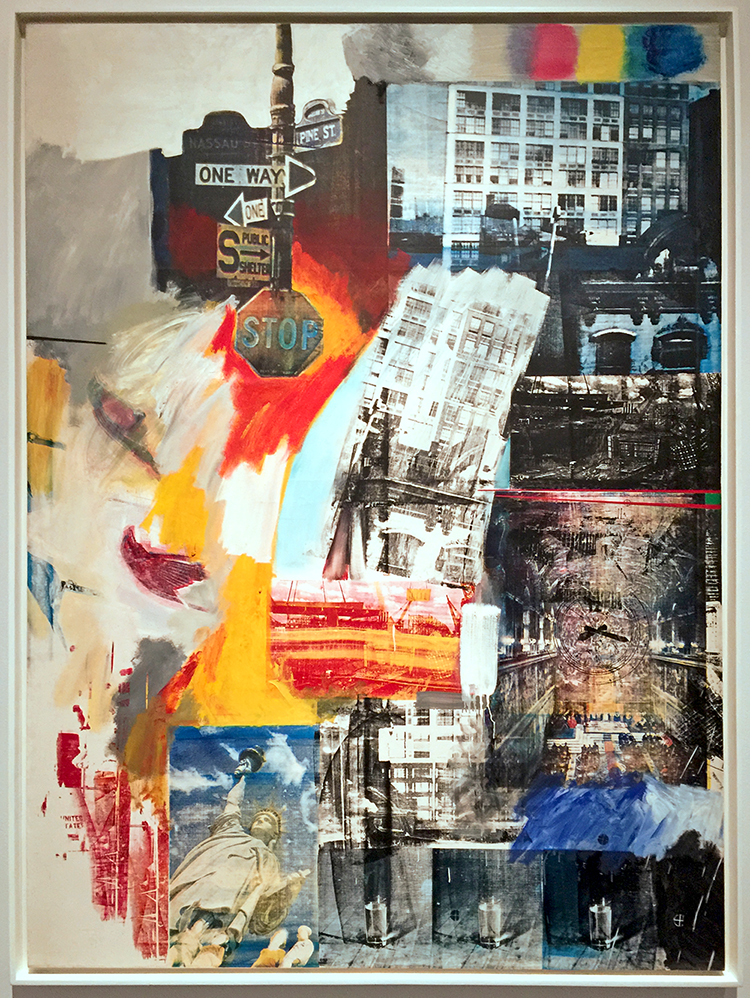
“Estate” (1963) Oil and silkscreen -ink print on canvas
Rauschenberg started in the early 60s to use more and more readymade images into his paintings and visited Andy Warhol in the studio in 1962 to get an intro into the silkscreen technique. He had a friend destroy his stock of screens to avoid the pressure of repeating himself in his artwork.
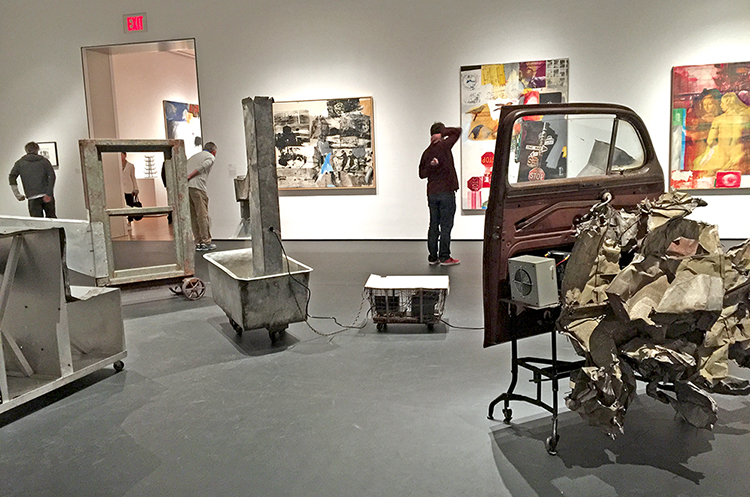
I could look at them forever- and as you can see below the paintings are actually quite big.
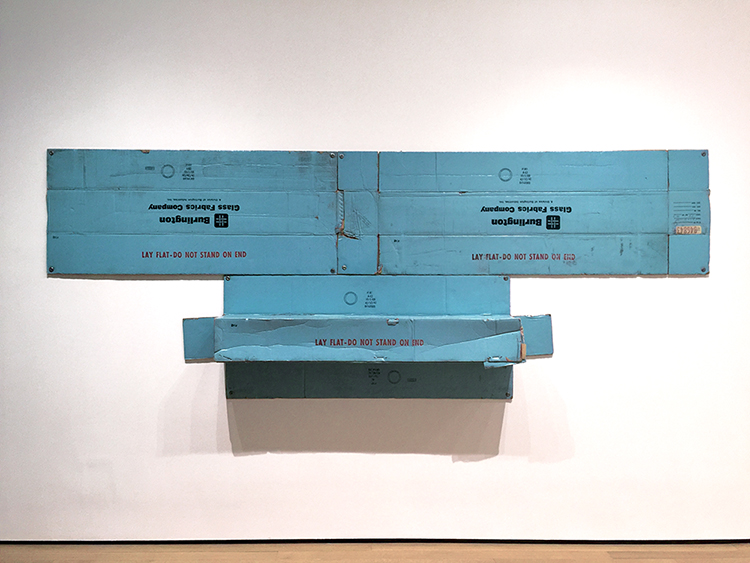
“Volon” (1971)
Come on- admit…this makes you look at your boxes in a whole different way, no?
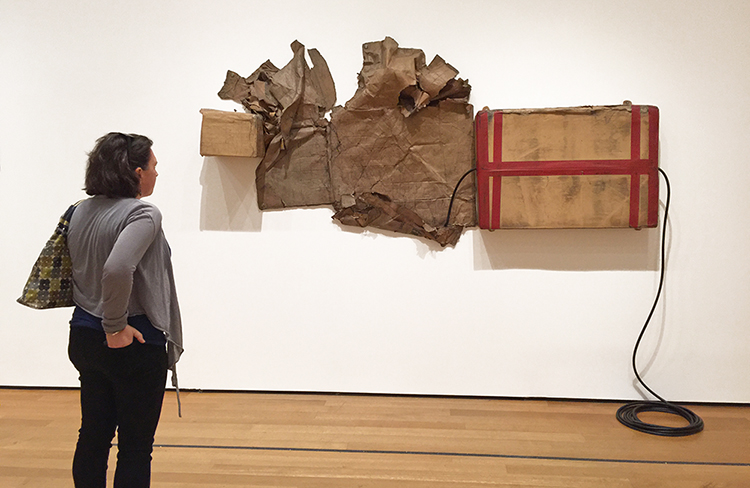
Untitled (1972) – Tape and cardboard boxes with rubber hose.
and so something that some people call trash becomes a piece of artwork – I love it!
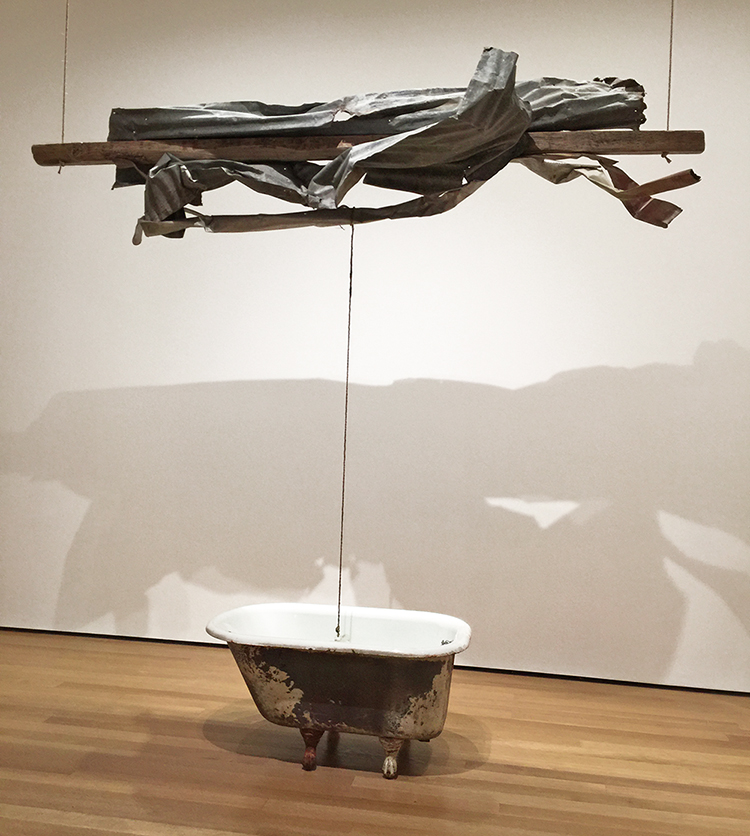
“Sor Aqua” (1973) Wood and metal suspended with rope over water-filled bathtub with glass jug.
Rauschenberg found the inspiration for this piece in Venice – where he gathered found materials for a series of assemblages. The water- filled bathtub evokes the Venetian canals, the suspended tangle of rusted metal refers to aging, deteriorated surfaces throughout the city.
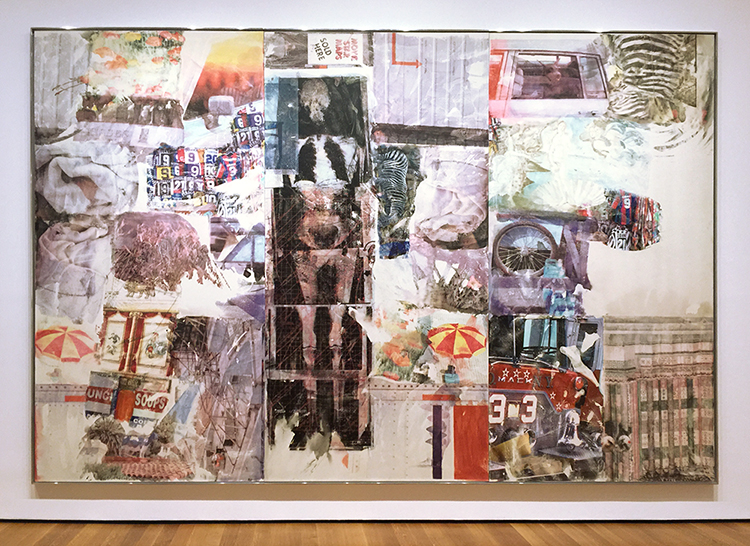
“Mirthday Man” (1997) Water-soluble inkjet dye and pigment transfer on plylaminate
You can find an x-ray of Rauschenberg which he called “self-portrait of inner man” and surrounded it with photographs he had taken over the year. Rauschenberg created this piece in one day on his 72nd birthday.
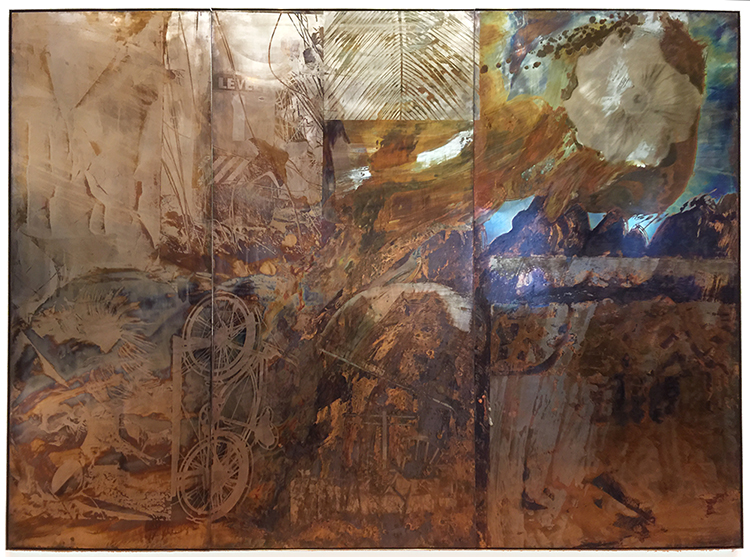
“Bible Bike” (1991) Tarnishes on brass, bronze and copper
The imagery and coloration in the metal painting series, Borealis, was produced through chemical reactions (which Rauschenberg called “corrosions”), sometimes with the addition of acrylic paint. Tarnishing agents, such as acetic acid and ammonium salts, are brushed or silkscreened onto brass, copper, or bronze surfaces, resulting in a muted range of colors: green, brown, or black, depending on the type of metal support. By painting or drawing with a tarnish-resistant medium before applying the tarnishing agent, the artist could create coloristic variations by contrasting the tarnished and untarnished metal.
I hope you enjoyed the Art Stroll- you can find all Art Strolls here on my website. But seriously if you are in NYC visit this exhibition – it is open until September 17, 2017.

Comments (1)
Sue Clarke
| #
I just love “scanning” and the pet paw prints!
Thanks for all the photos.
Reply